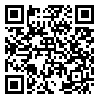BibTeX | RIS | EndNote | Medlars | ProCite | Reference Manager | RefWorks
Send citation to:
URL: http://rehabilitationj.uswr.ac.ir/article-1-286-en.html
Objective: Gestures of the hands and arms have long been observed to accompany speech in spontaneous conversation. However, the way in which these two modes of expression are related in production is not yet fully understood. So, the present study aims to investigate the spontaneous gestures that accompany speech in adults who stutter in comparison to fluent controls.
Materials & Methods: In this cross-sectional and comparative research, ten adults who stutter were selected randomly from speech and language pathology clinics and compared with ten healthy persons as control group who were matched with stutterers according to sex, age and education. The cartoon story-retelling task used to elicit spontaneous gestures that accompany speech. Participants were asked to watch the animation carefully and then retell the storyline in as much detail as possible to a listener sitting across from him or her and his or her narration was video recorded simultaneously. Then recorded utterances and gestures were analyzed. The statistical methods such as Kolmogorov- Smirnov and Independent t-test were used for data analyzing.
Results: The results indicated that stutterers in comparison to controls in average use fewer iconic gestures in their narration (P=0.005). Also, stutterers in comparison to controls in average use fewer iconic gestures per each utterance and word (P=0.019). Furthermore, the execution of gesture production during moments of dysfluency revealed that more than 70% of the gestures produced with stuttering were frozen or abandoned at the moment of dysfluency.
Conclusion: It seems gesture and speech have such an intricate and deep association that show similar frequency and timing patterns and move completely parallel to each other in such a way that deficit in speech results in deficiency in hand gesture.
Received: 19/05/2009 | Accepted: 12/10/2015 | Published: 12/10/2015
| Rights and permissions | |
 |
This work is licensed under a Creative Commons Attribution-NonCommercial 4.0 International License. |





